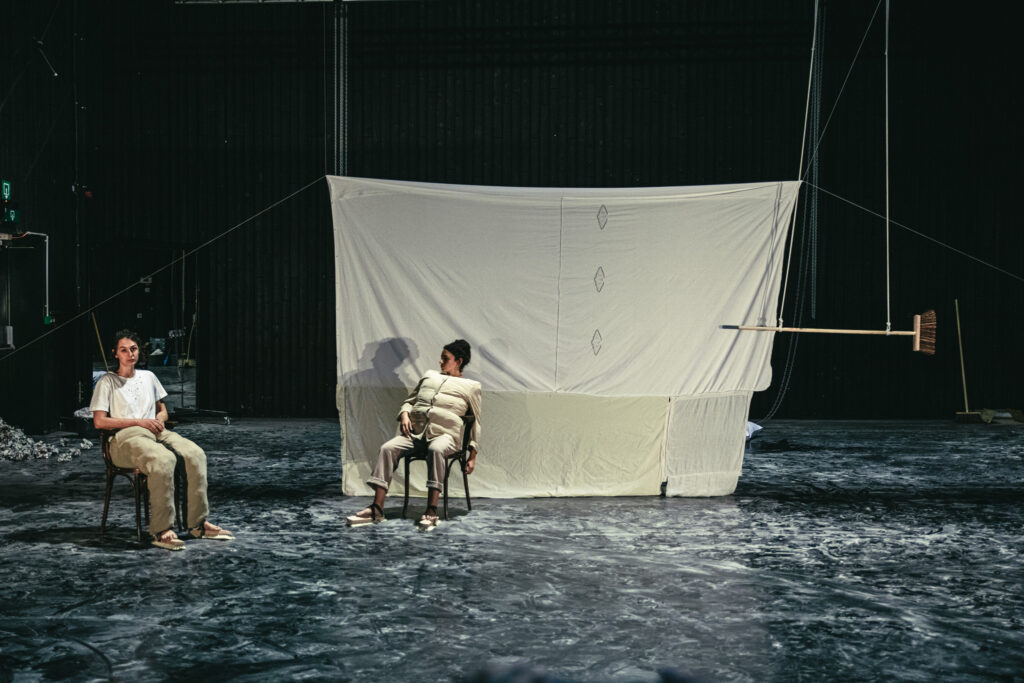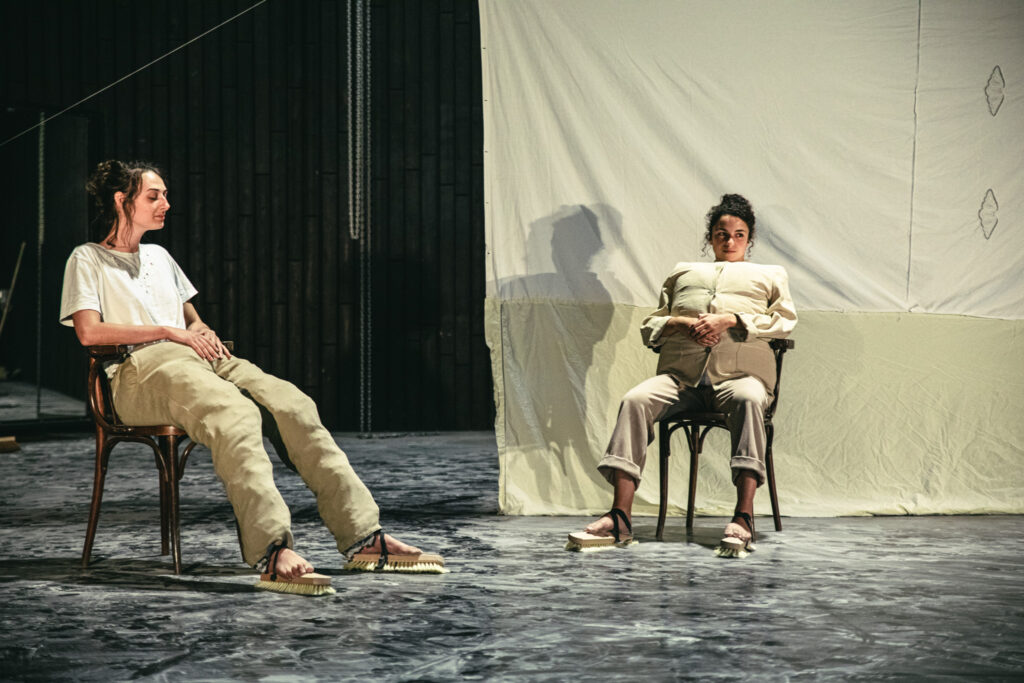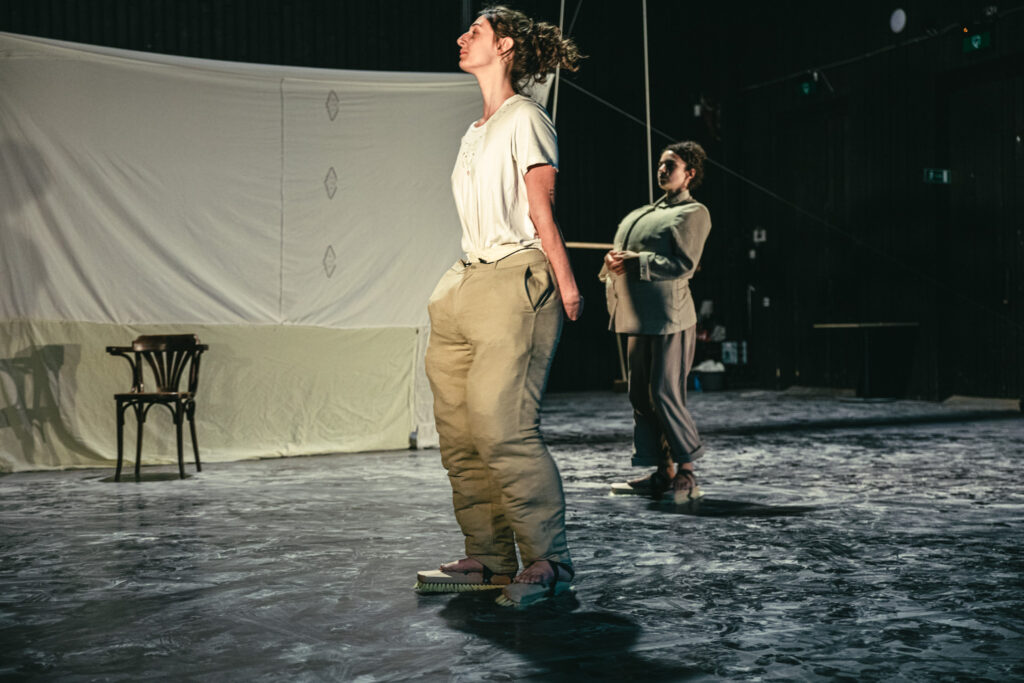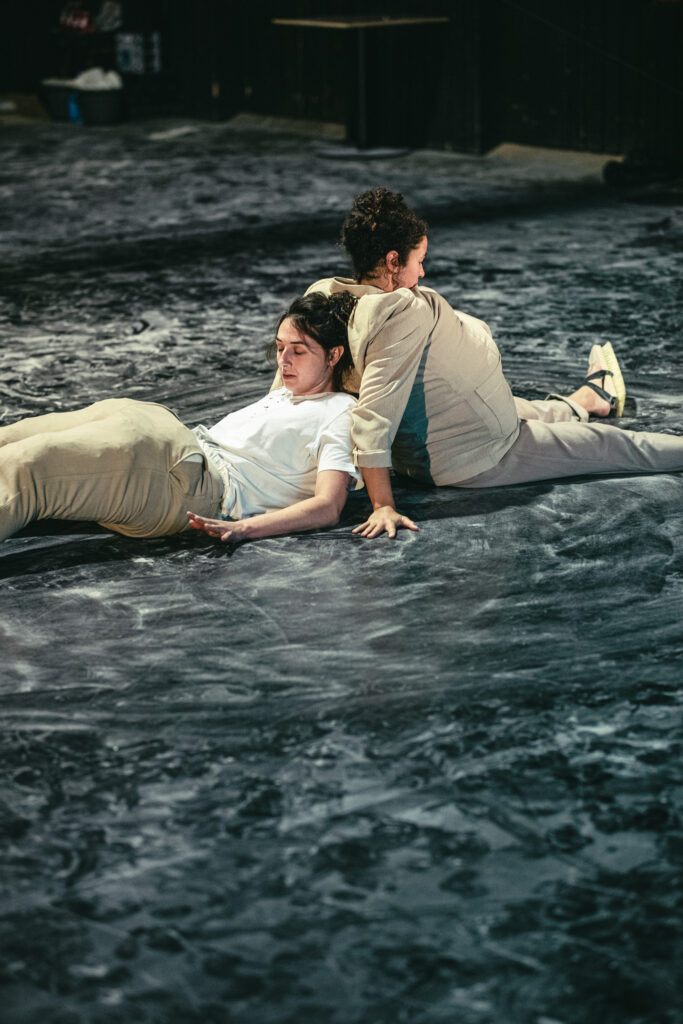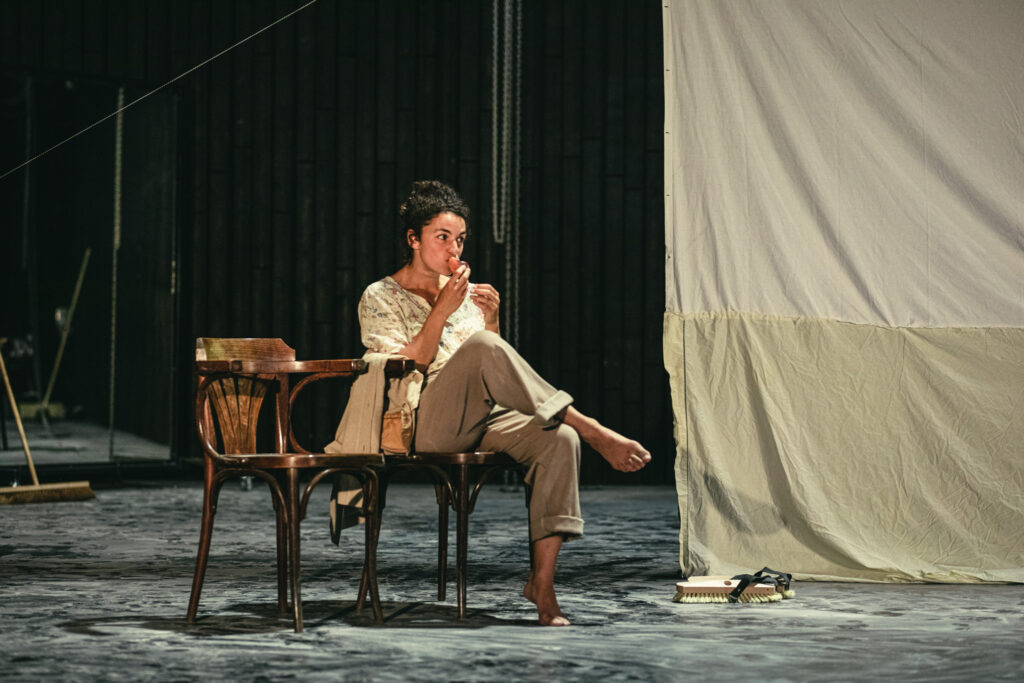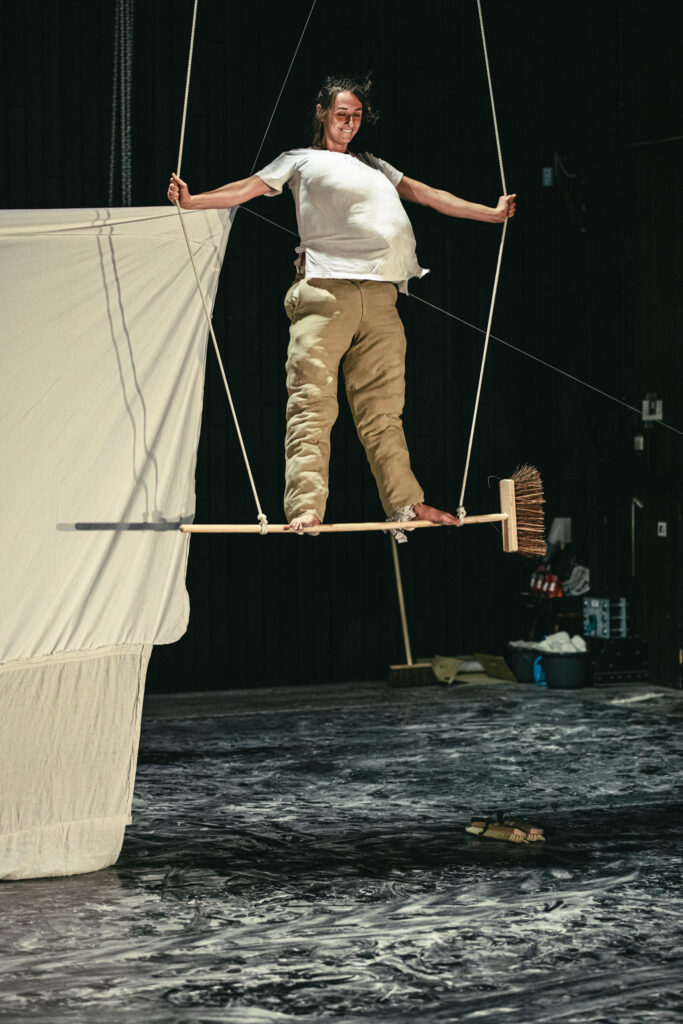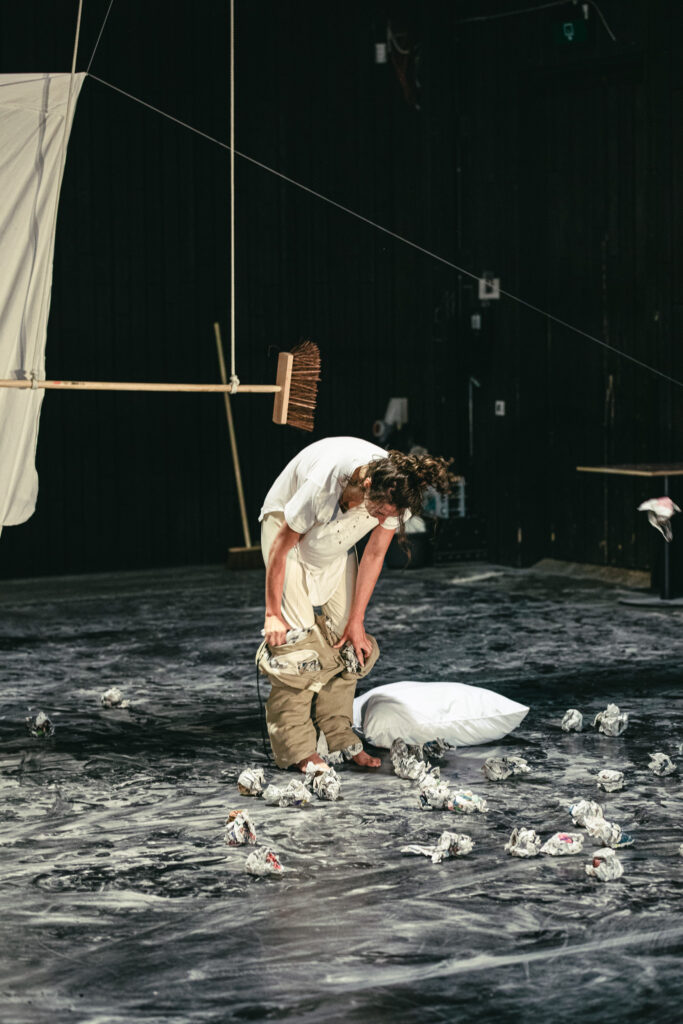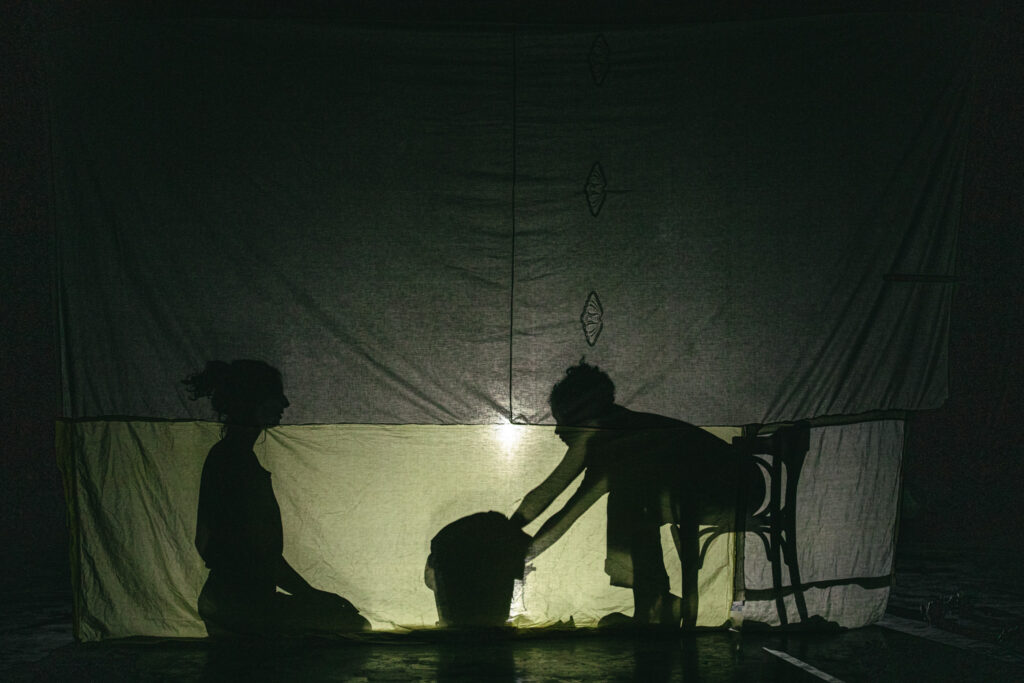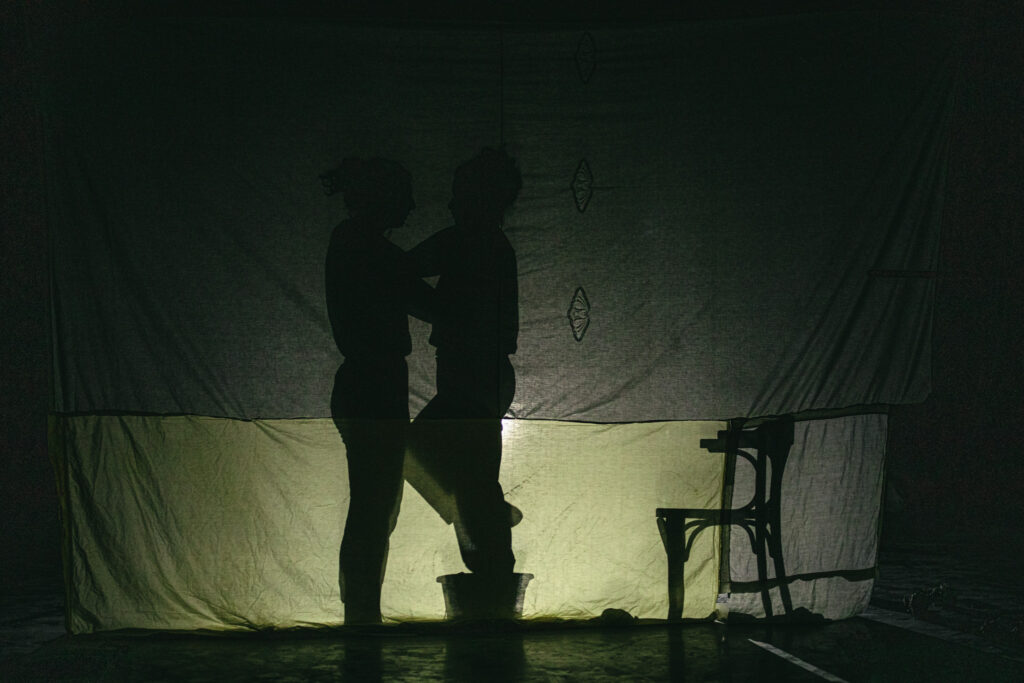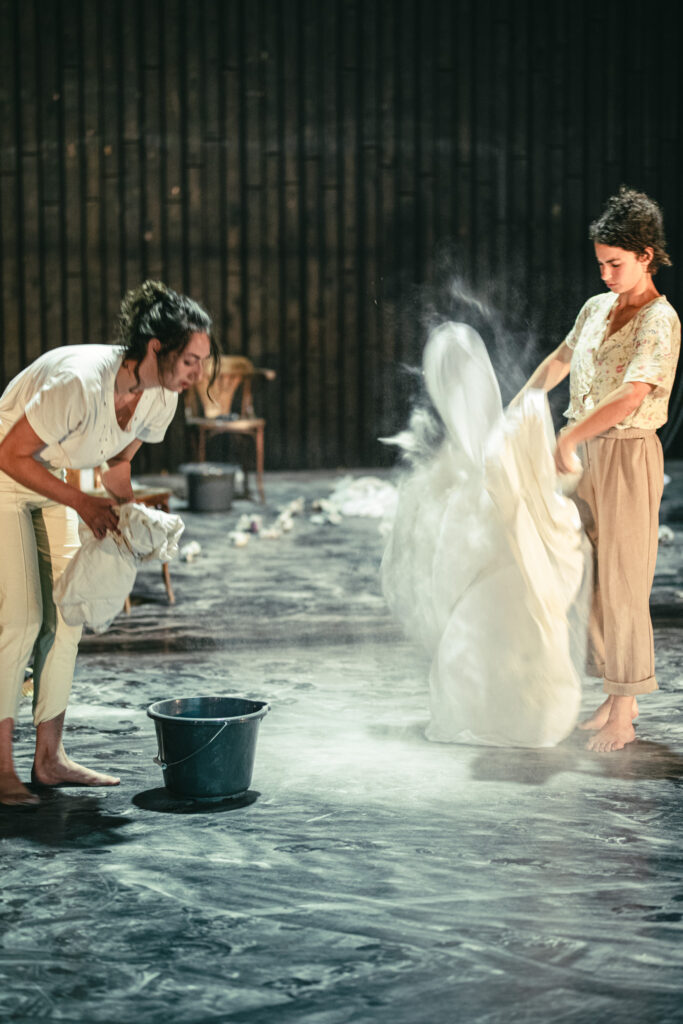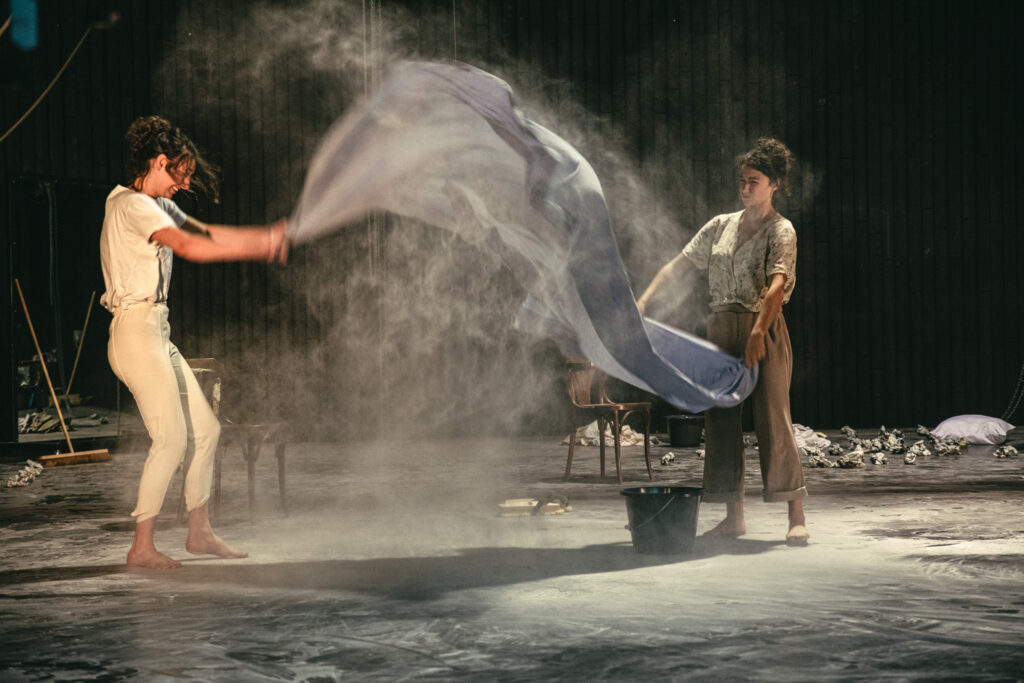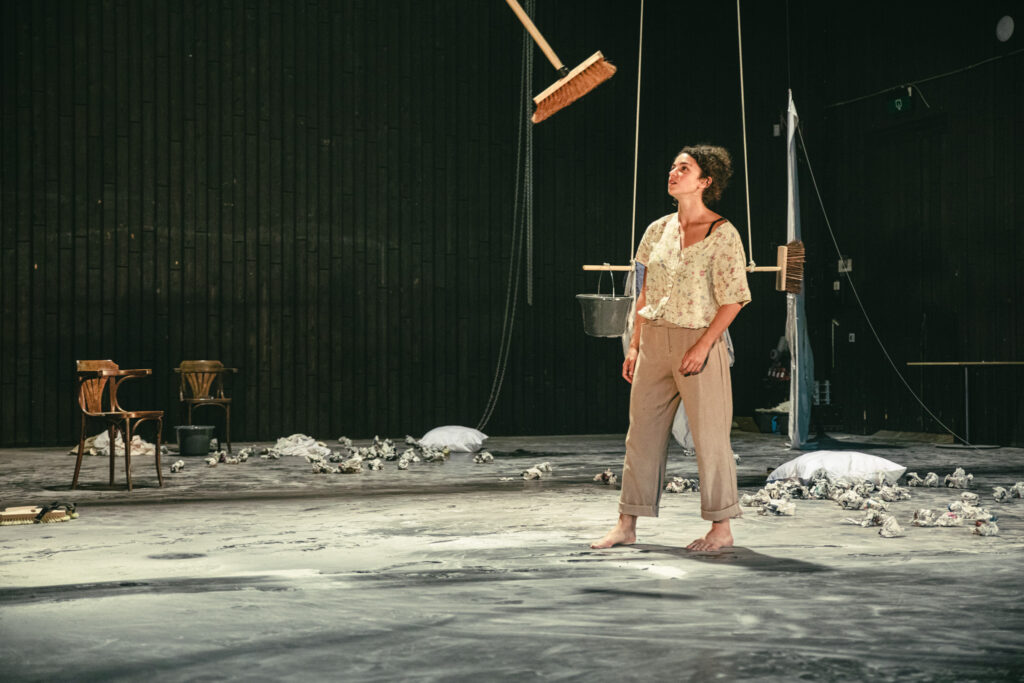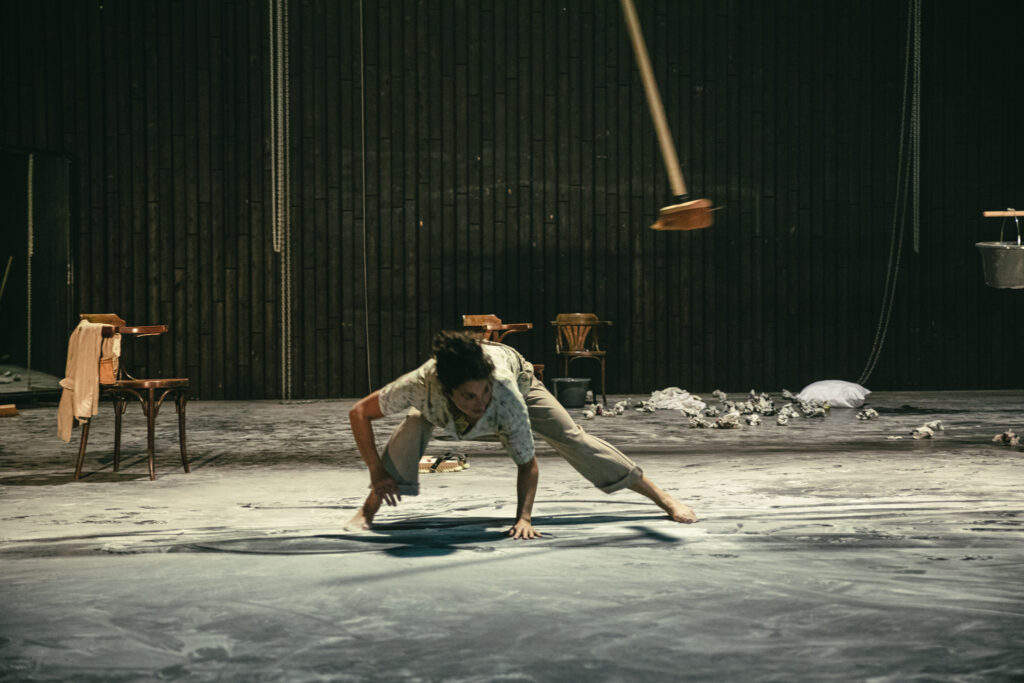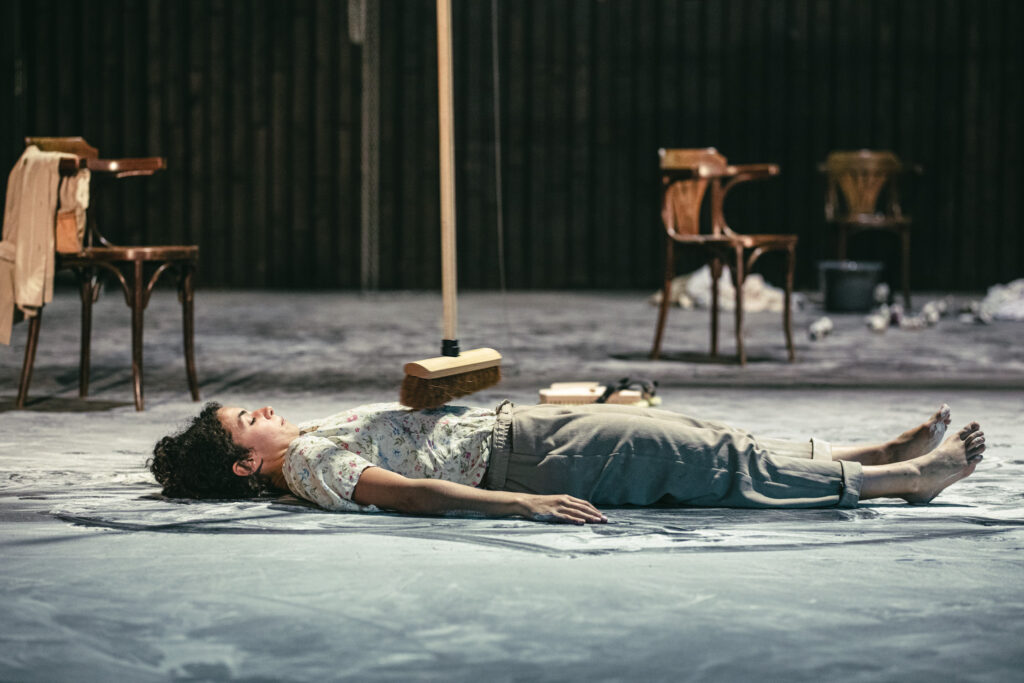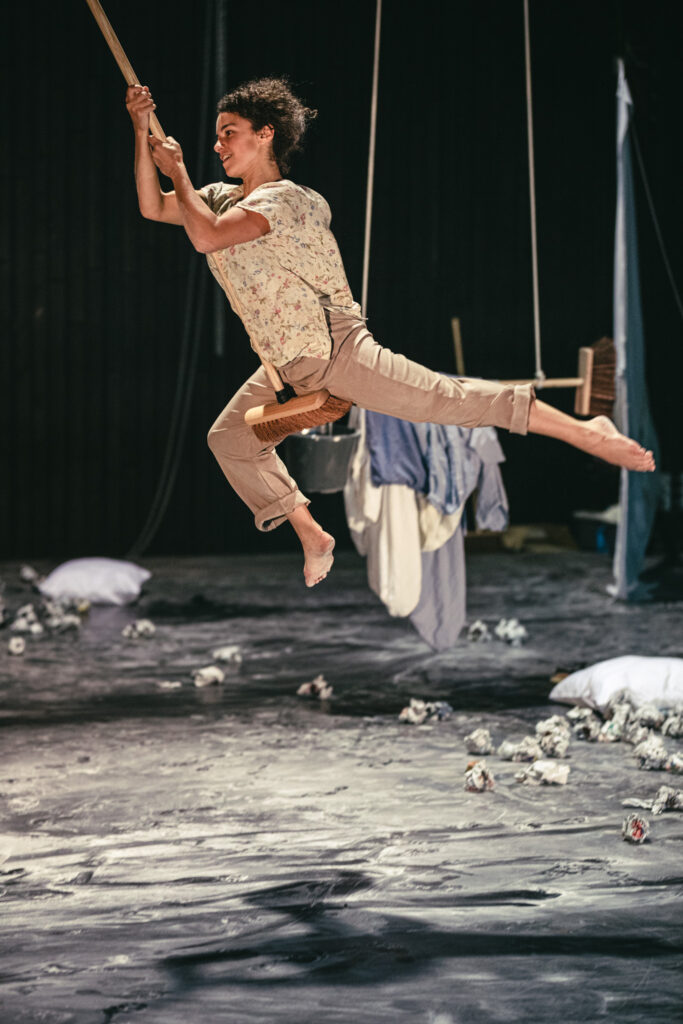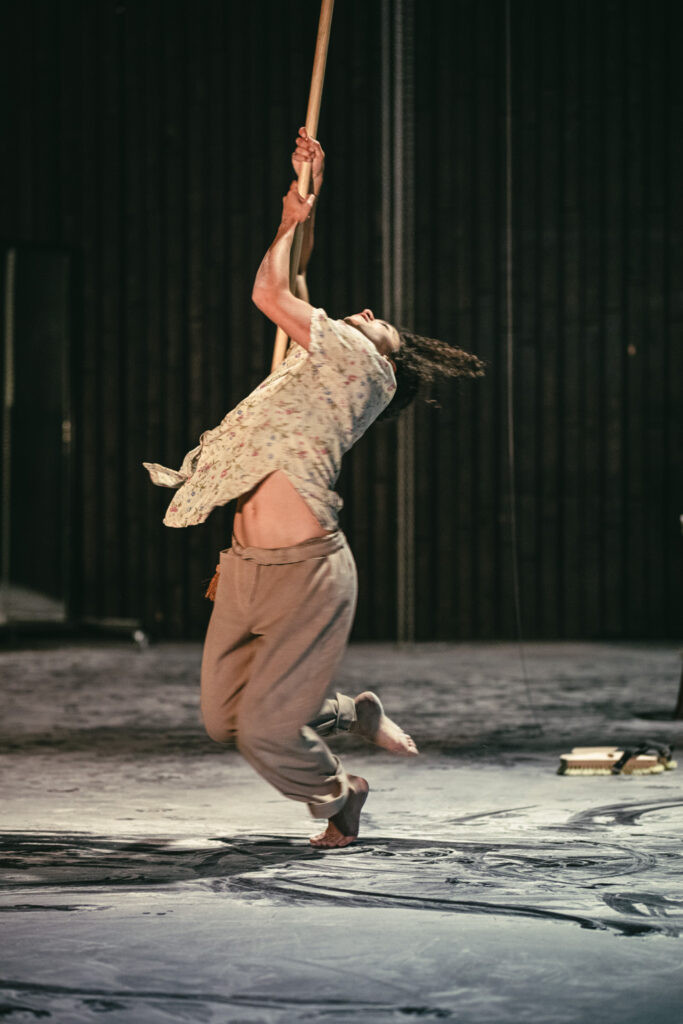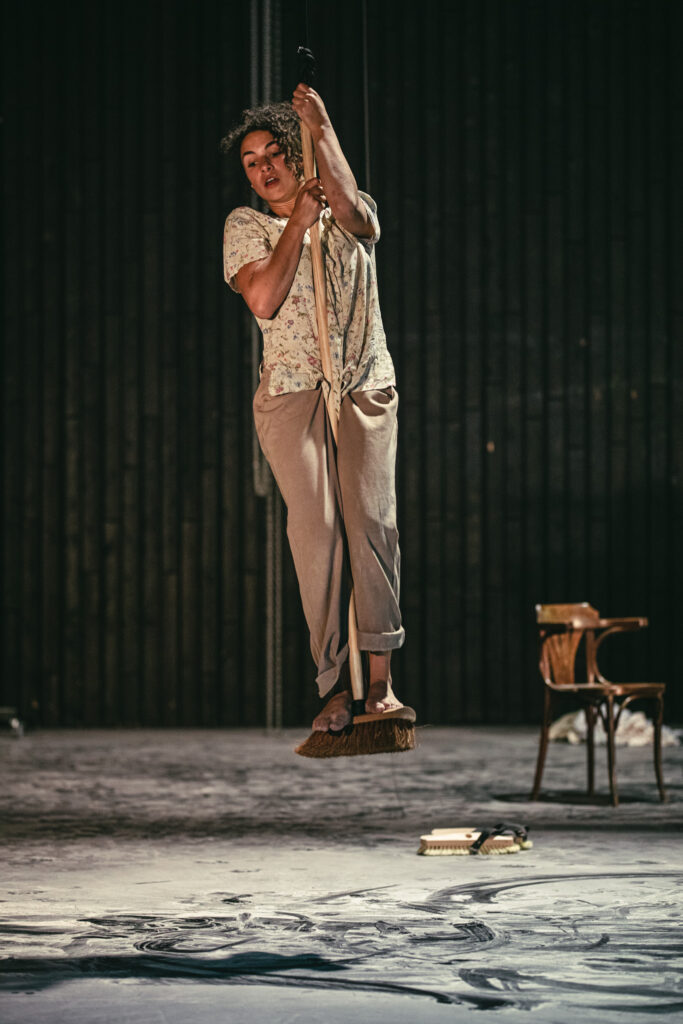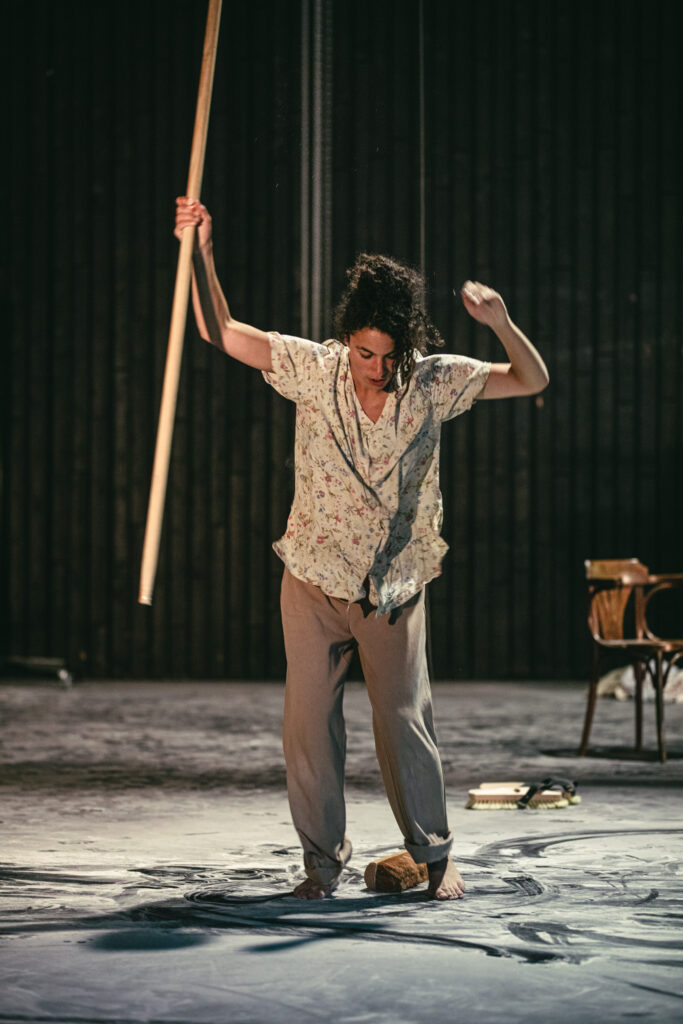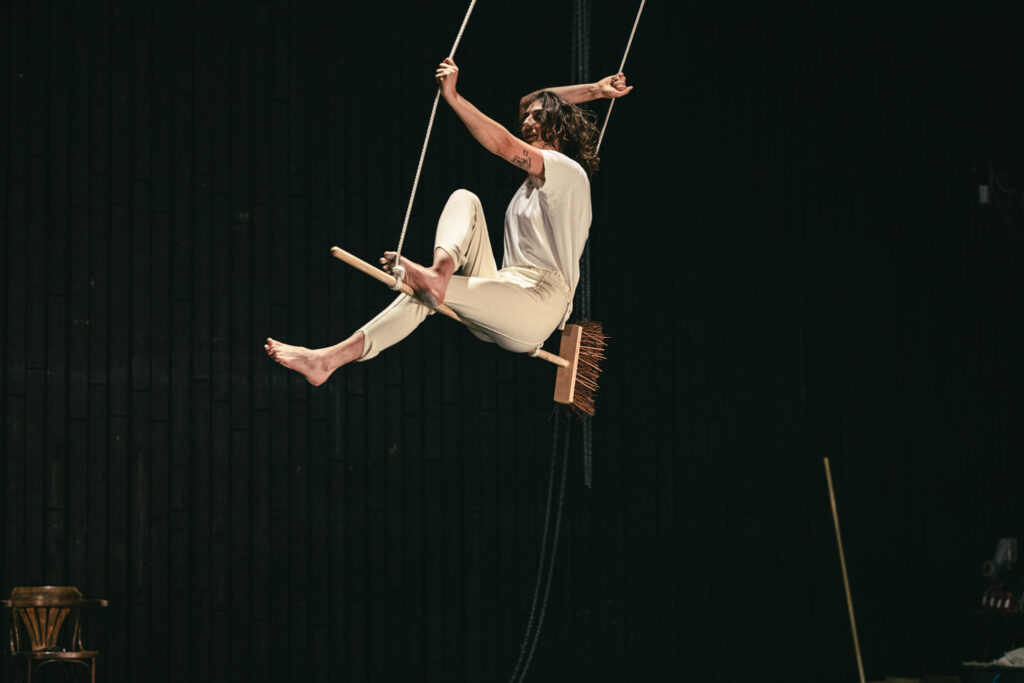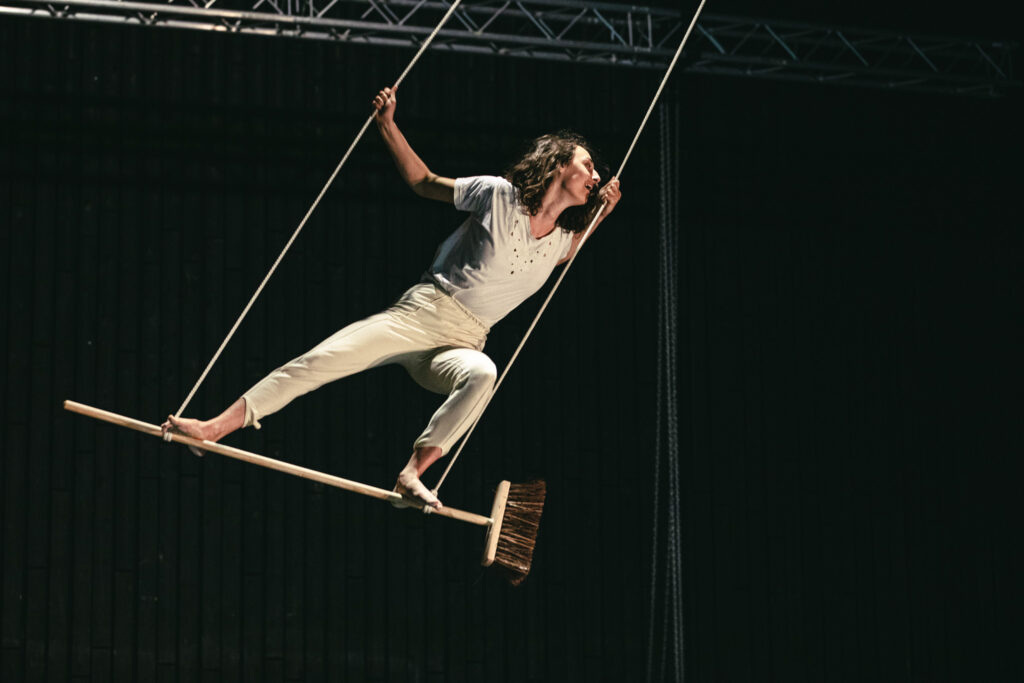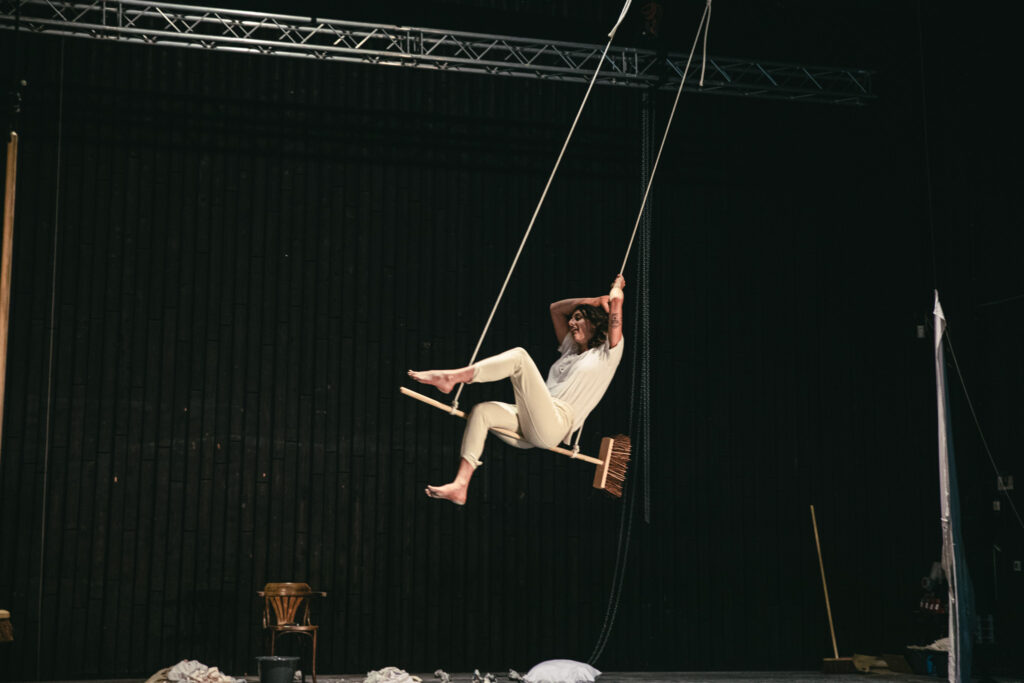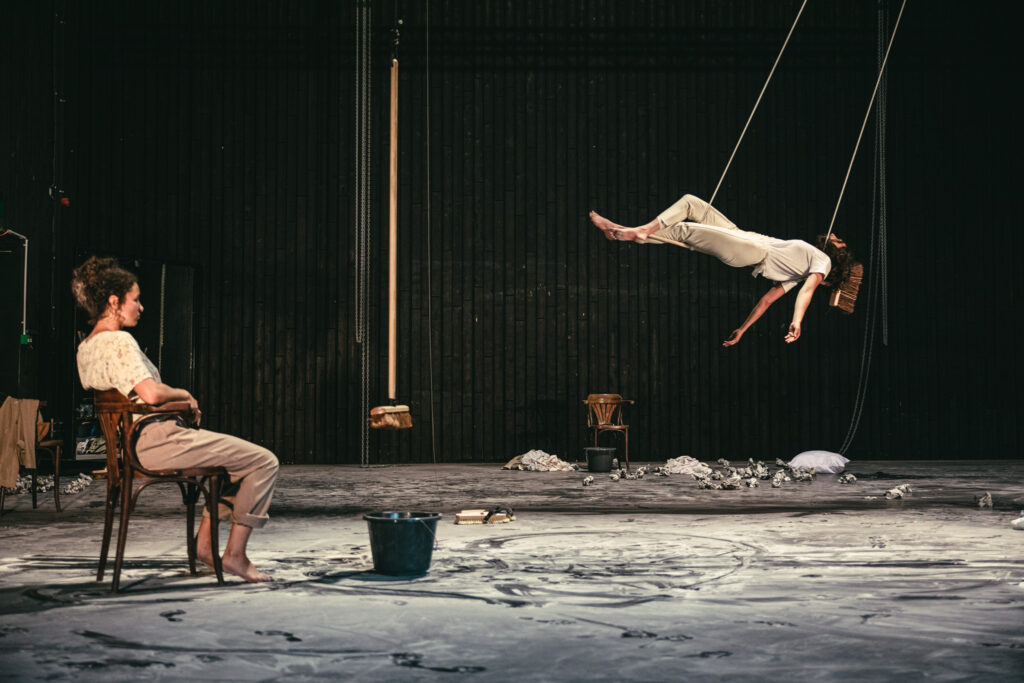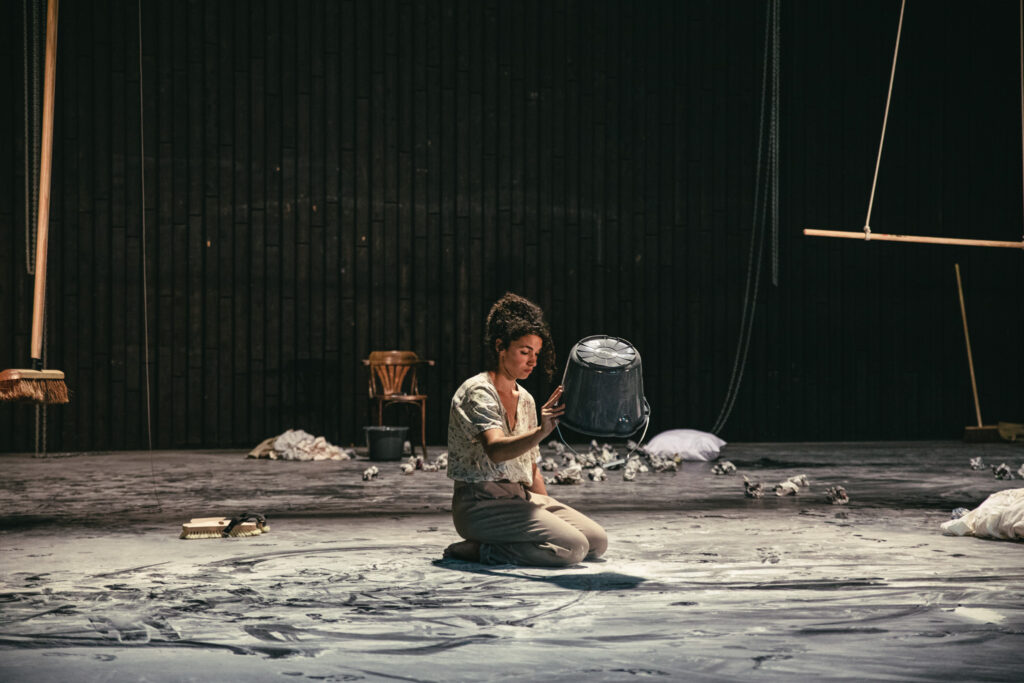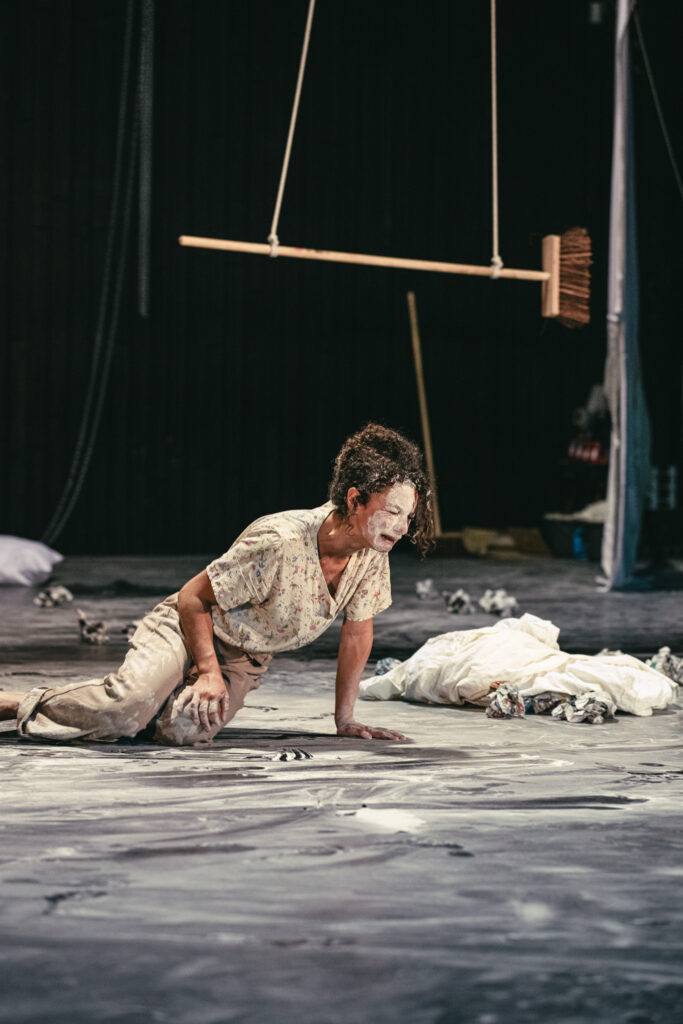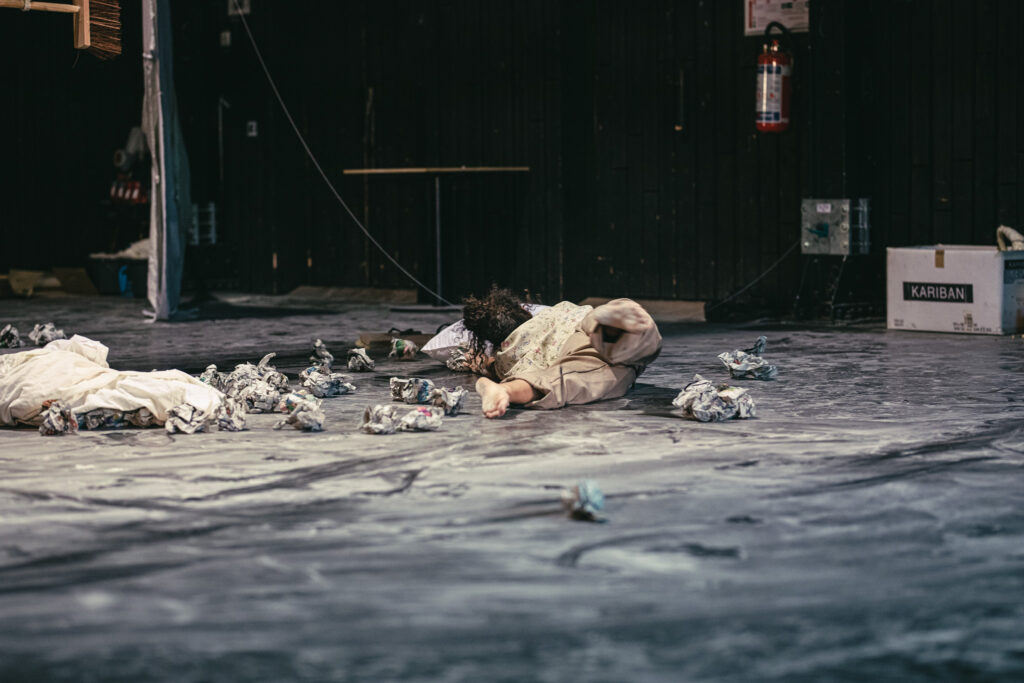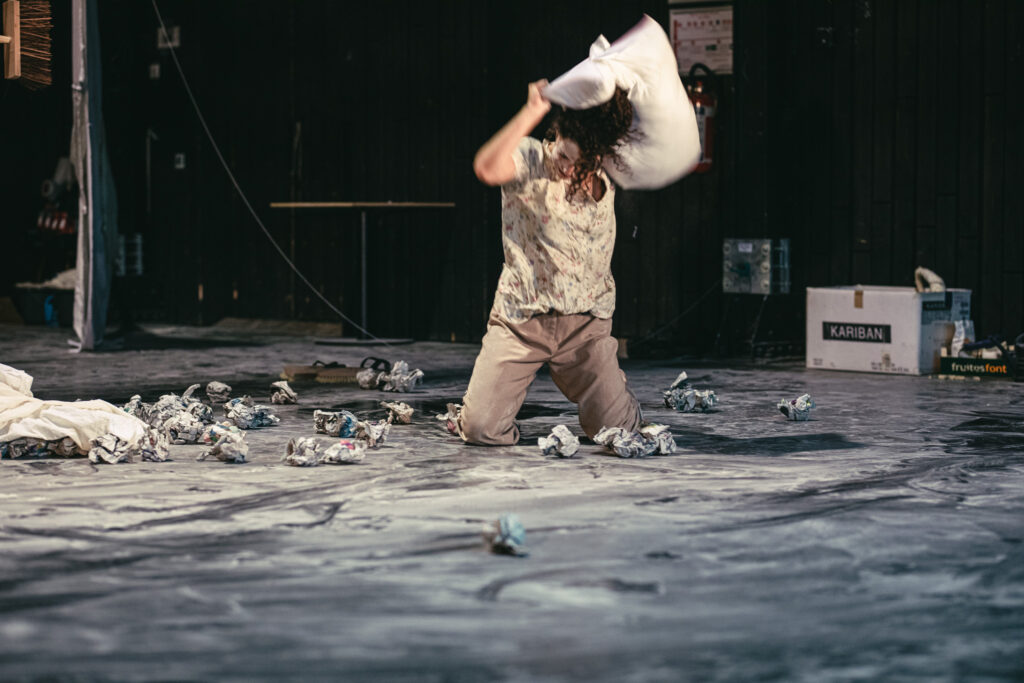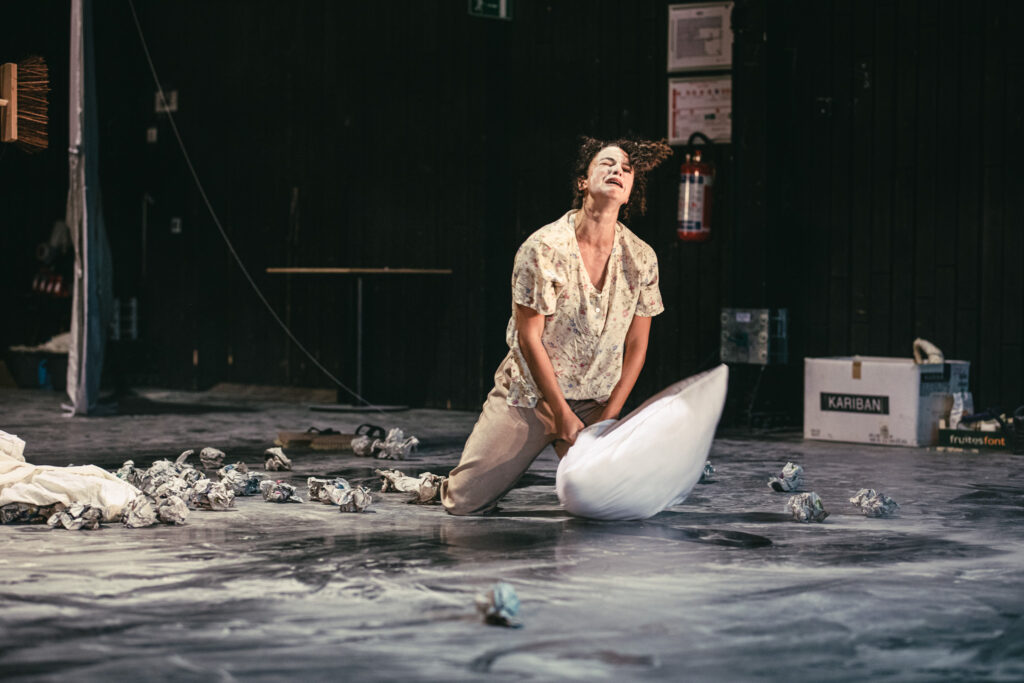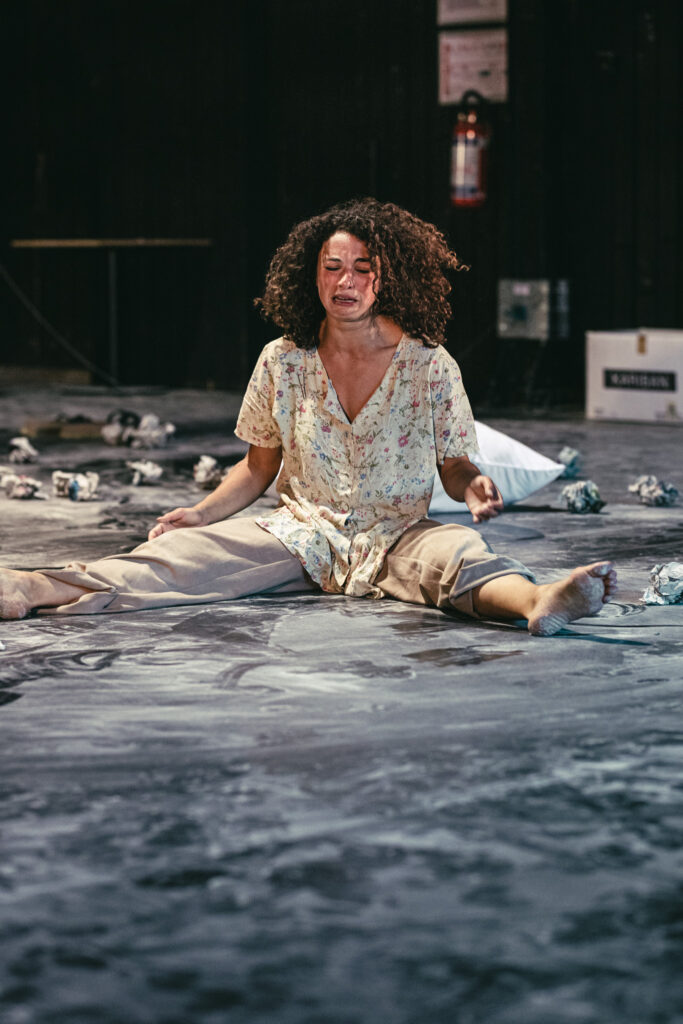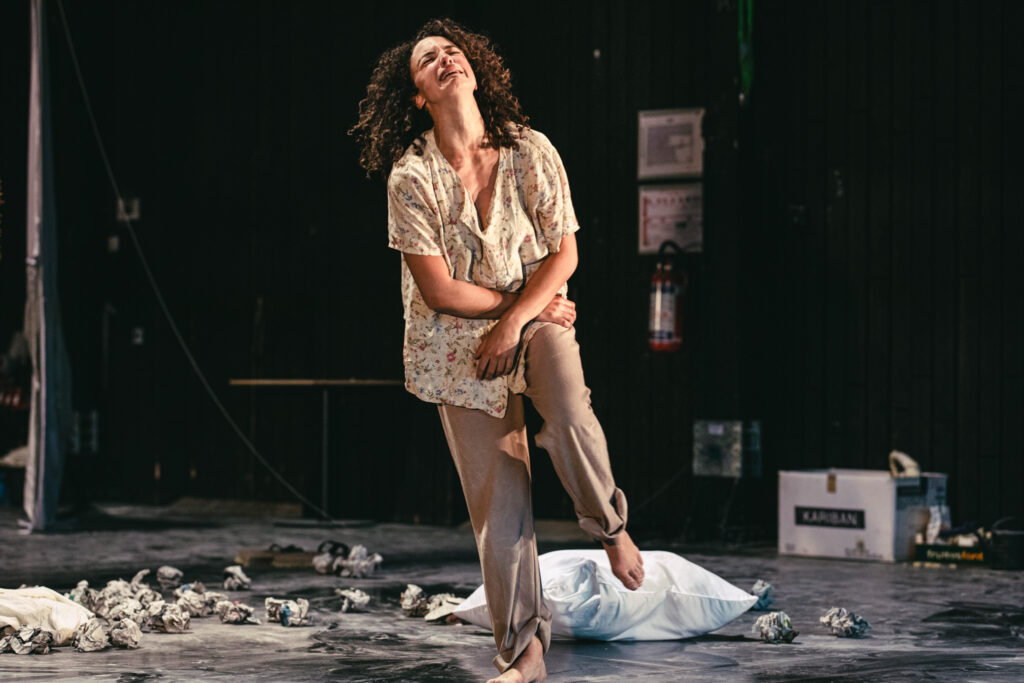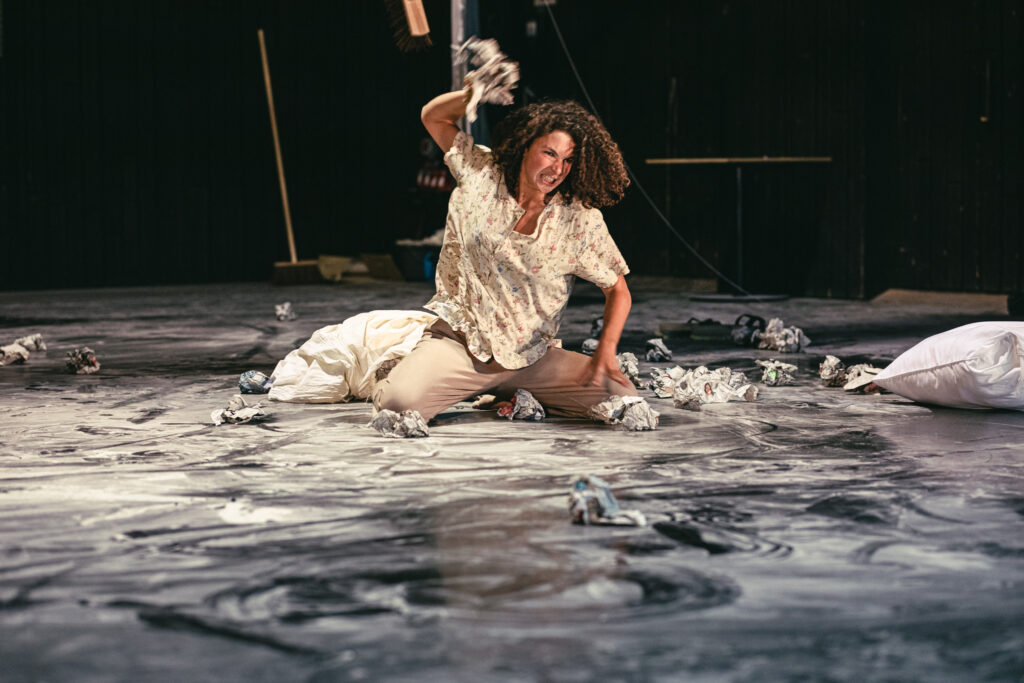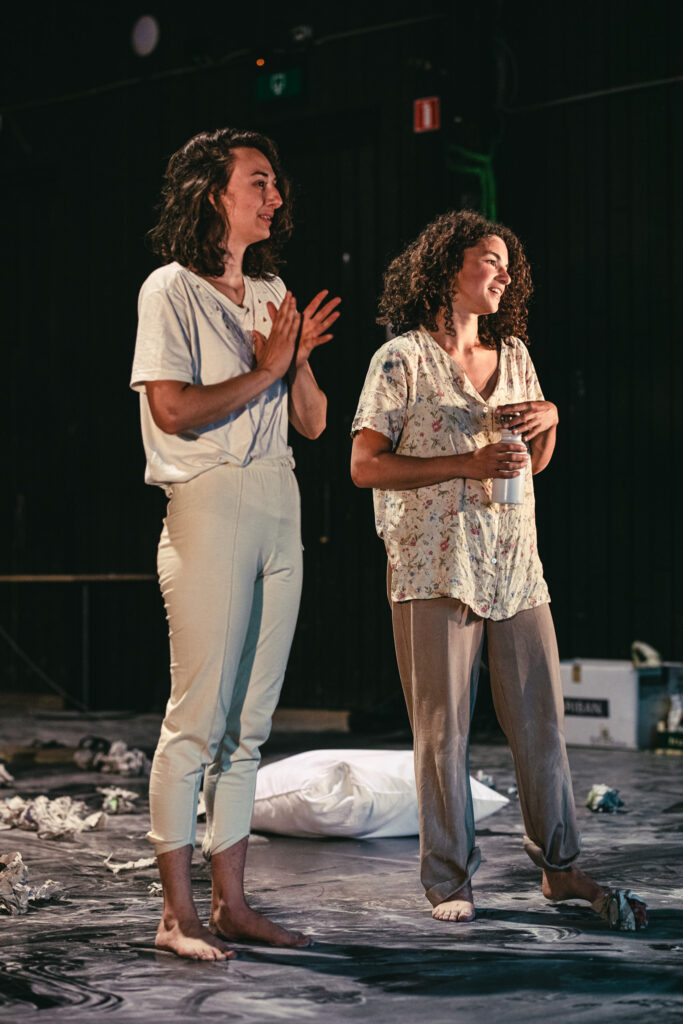The Croatian trapeze artist Petra Najman and the French contemporary dancer Natacha Kierbel worked together in Ghent (B) from 19 until 30 June 2022. This is the logbook of Natacha.
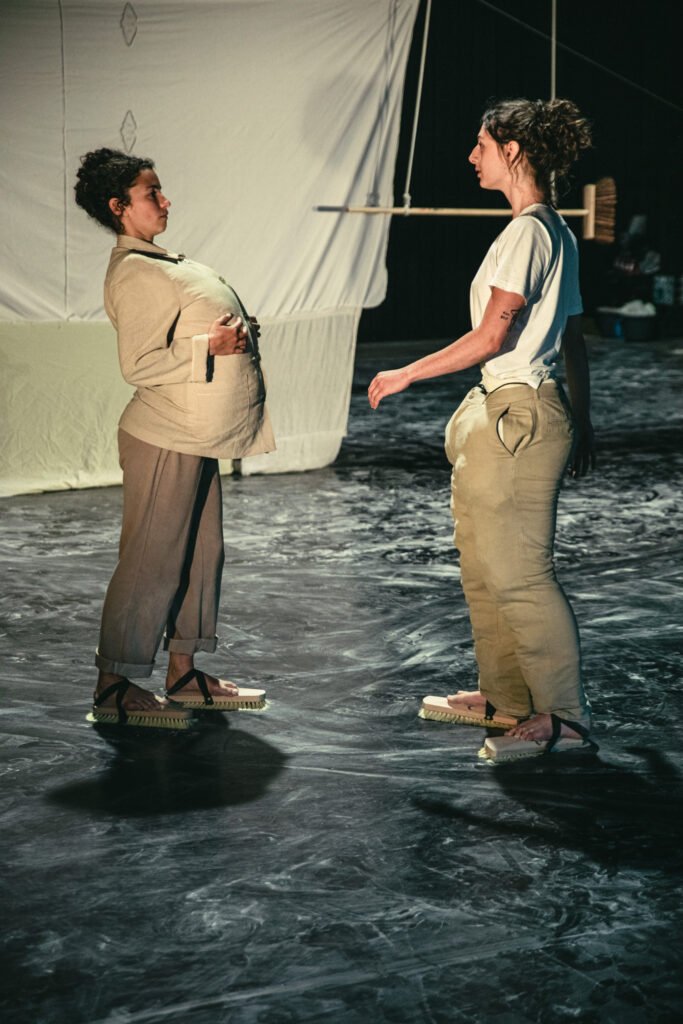
Starting point
Create a dispositive where we can be on the floor and hang.
Transform the trapeze in something else. Should we build it, which material, which shape, should it be already an object?
Thematic/reference point
House work and the materials required for it, the lavandières and blanchisseuses.
Inspirations: old engravings of lavandières, extracts from the book L’Assommoir written by Emile Zola.

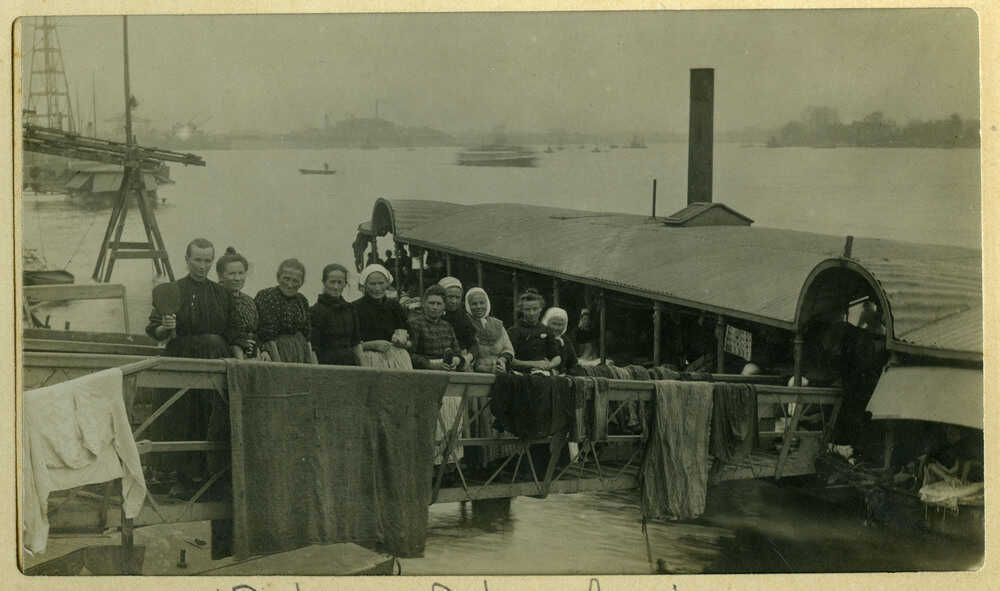
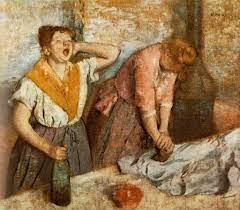
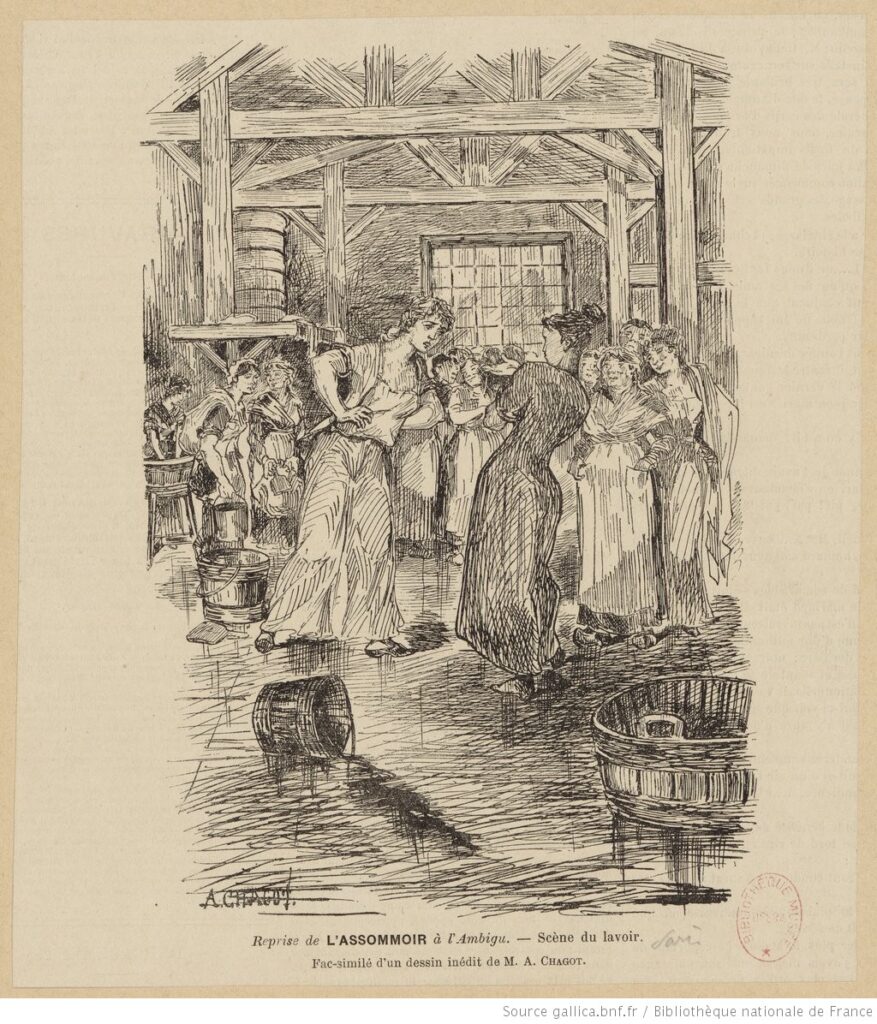
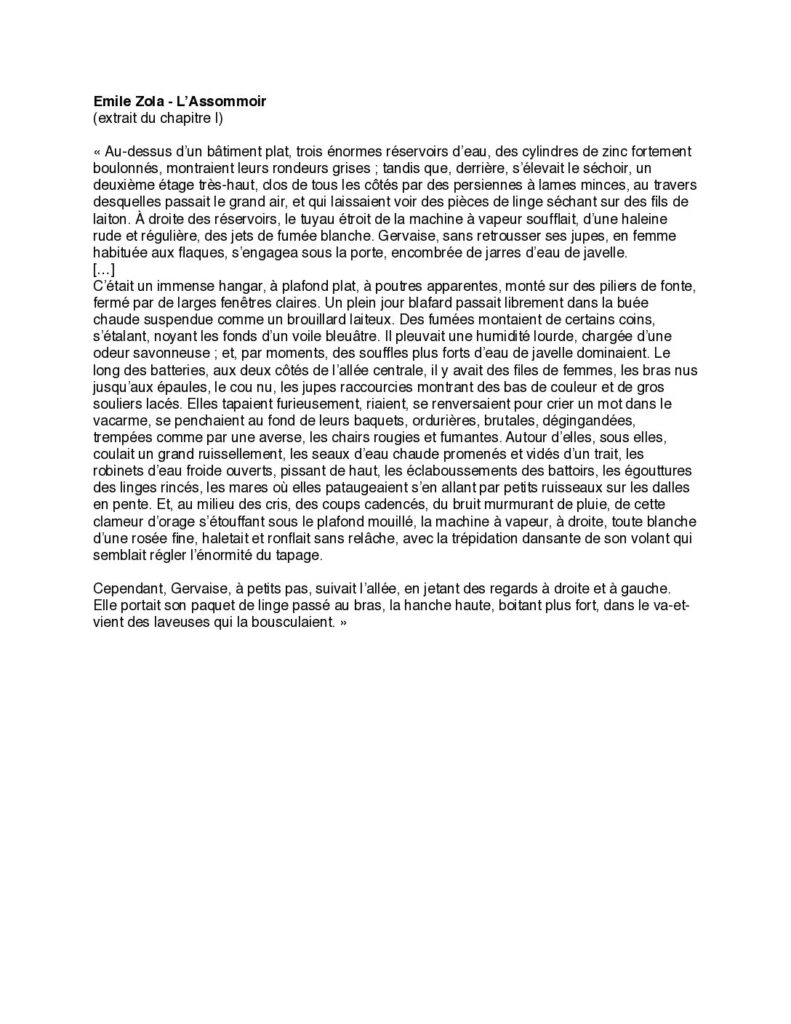
Process
From this material of housework, how to create an environment/scenography made out from flour, brooms, buckets, bed linen, old newspapers,… This environment evokes a universe, a period, but it remains in a way rather abstract, it does not represent the interior of a house or a workplace in particular. All the objects that make up this environment will be used, moved and consequently transform the space as they are activated.
We looked for ways to repurpose these objects, for example by hanging brooms in different ways, they became « agrès » on which we could hang. We used a large sheet to make shadows. The idea was to start from objects related to laborious and unpleasant tasks often performed by women in the last centuries and to find games that transform these objects by the way we use them.
The use of the color white: white represents cleanliness and purity and we wanted to play with the flour spread in the space which creates a very “dirty” and neglected side and which clashes with the image of pure and clean white. This for me represents in a certain way the work behind the result, what is done behind the scenes, passed under silence, invisibilized.
Through this universe that we posed, I wished to play with very pushed emotional states, even exaggerated. Among the things that are invisibilized in society, there are the emotional states, it is considered bad to express them in a too frontal or too intense way. I was interested in how to bring these very pushed states into play and instead of them being a source of shame or embarrassment, on the contrary, it is an act of empowerment and a source of enjoyment in the fact of exposing so frontally a place of fragility. And in this process, to explore what gestures are born from these states and how to develop a physicality from it.
Pictures by Michiel Devijver
